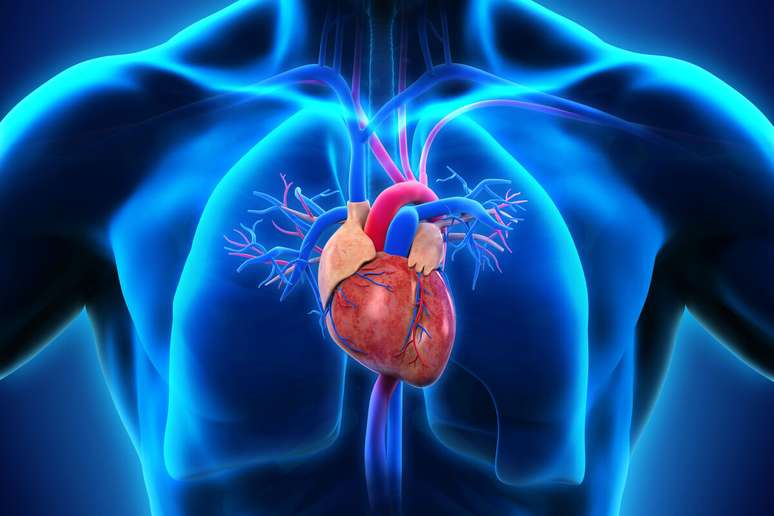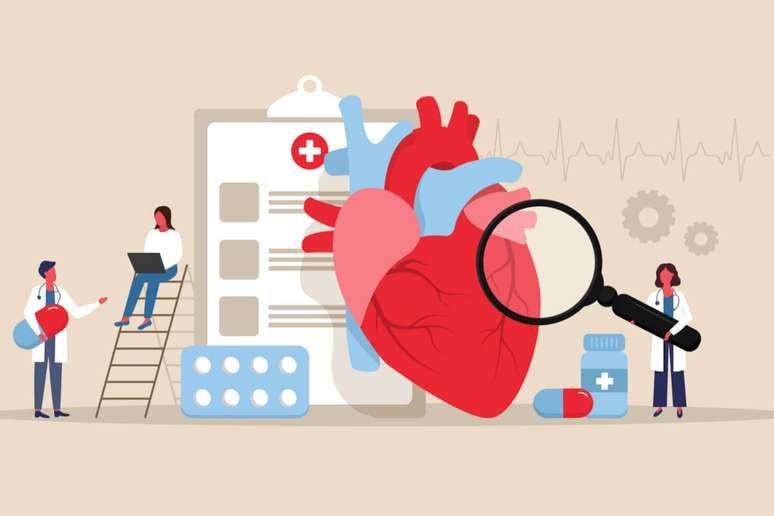The cardiologist talks about the importance of cardiac checks and routine exams
Did you know that heart disease is the leading cause of death in the country? According to the Ministry of Health, every year around 300,000 people have a heart attack and in 30% of these cases this causes death. Despite awareness campaigns, many people still don’t take care of their heart health. The ministry also predicts that by 2040, the number of heart attacks could increase by up to 250%.
Dr. Thais Pinheiro Lima, a cardiologist and cardiac imaging specialist, emphasizes the importance of early diagnosis, as this can prevent serious complications related to heart disease. She is associated with the Heart Institute (InCor) of the Hospital das Clínicas of the Faculty of Medicine of the University of São Paulo (HCFMUSP) and one of the founders of CardioScan cardiovascular teleradiology.
Verify cardiology is essential
Unfortunately, cardiac tests are not always carried out with adequate frequency. “OR verify it can be every six months or every year, for example, and the doctor will recommend tests based on the patient’s needs,” recommends Dr. Thais.
According to the cardiologist, today there are non-invasive alternatives for the diagnosis and identification of serious diseases that allow urgent treatment. This is the case of coronary tomographic angiography, a test that uses computed tomography to visualize the blood vessels that supply the blood vessels. cardiac muscles.
Even young patients run cardiovascular risks
With this resource it is possible to control the development of fat plaques that reduce the blood supply to the body Heart and increase the risk of a future myocardial infarction. «Even in the case of young patients, if there is a moderate to high cardiovascular risk, cardiac angio-tomography may be indicated. It is the first choice test, extremely important to make a more accurate diagnosis and indicate the treatment based on the patient’s needs”, adds the cardiologist.
To clarify some of the main doubts about the diagnosis of cardiovascular diseases on the occasion of World Heart Day (29 September), the cardiologist answers the following questions on the importance of verify cardiology, highlighting the importance of imaging tests.
1. Does everyone have to undergo cardiac tests?
Yes. We all need to undergo cardiac tests at some point in our lives. In general, asymptomatic people are advised to periodically consult a cardiologist starting from the age of 40. However, the patient should always contact a cardiologist immediately if he identifies any symptoms. It is concerning when the patient experiences palpitations (heartbeat), chest pain, or frequent fainting.
A cardiology has a wide range of tests, recommended based on the patient’s symptoms, such as electrocardiogram, echocardiogram, map, Holter, stress test, coronary angiography, cardiac resonance, scintigraphy and catheterization. Checking your heart condition regularly also applies to children and young adults, especially those with comorbidities, such as obesity, diabetes, smoking, high cholesterol and high blood pressure.
2. What are the most common diseases?
The most common heart diseases are initially diagnosed based on symptoms such as palpitations, chest pain, fainting, rapid heartbeat, and extreme tiredness when walking. In the list, the most common are coronary heart disease and cardiac arrhythmias. Based on what is discovered, there is a follow-up recommendation for each case.

3. What procedures are performed if a heart attack is suspected?
When the patient arrives at the emergency room, a risk classification is carried out. If a heart attack is suspected, the case is immediately declared an emergency and the patient enters the care flow of the chest pain protocol.
It is essential that the person is seen quickly and given an electrocardiogram within 10 minutes. From there, the doctor views the electro, talks to it, and examines the patient, identifying whether there is any acute change, such as a severe heart attack or an acute arrhythmia (like atrial fibrillation, for example).
Chest pain should be treated immediately
If the patient continues with the chest pain protocol, he or she is referred for immediate treatment, which may vary as needed. Blood tests and risk stratification will be performed according to the scores recommended worldwide.
In addition to pharmacological treatment, in the care of patients at low and intermediate risk it is possible to perform coronary angio-tomography and also emergency catheterization, carried out within 60 minutes of arrival at the hospital, in cases of more serious heart attacks. I often say that a multidisciplinary team in an emergency scenario is essential to provide agile and effective treatment, ensuring a better clinical outcome for the patient.
4. Can more serious problems be avoided with early diagnosis?
Undoubtedly. The earlier we identify the problem, the better the chance of controlling it through optimized clinical treatment, correctly adapting medications, providing guidance and ensuring regular follow-up. Attention to risk factors (such as excessive alcohol consumption, smoking and diabetes, for example) is essential from the beginning.
We have several studies that confirm that, if well guided, the patient has the possibility of living much better and with his health under control. The chance of a serious outcome, such as a heart attack or death, decreases significantly.
5. When should catheterization be performed?
Catheterization is a common procedure increasingly used in the treatment of coronary heart disease, which involves performing an angioplasty (placing a stent in the coronary artery). Study the anatomy of the arteries of the Heartwe have coronary tomography angiography.
This test has high accuracy, that is, it already detects blockages and obstructions in the arteries even in the earliest cases and has practically replaced catheterization in the scenario of diagnosing coronary heart disease. Commonly, it is performed by a cardiologist with subspecialization in hemodynamics, preferably certified by the Brazilian Society of Hemodynamics Interventional Cardiology.
6. Which routine tests prevent serious problems?
According to the recent recommendations of the European and American Cardiological Guidelines on the prevention of cardiovascular risk, in the cases of asymptomatic people there are tests to be carried out based on age groups. If the patient has symptoms it is important to consider undergoing cardiac tests at any time in life. In general, the verify Annual treatment should be recommended for all people over the age of 40.
I emphasize here that, despite all the information currently available, Brazil still presents a disease scenario cardiovascular and very worrying heart attacks. Therefore, it is always worth remembering that a good conversation with your doctor and undergoing periodic examinations, in addition to maintaining healthy habits with a regulated diet, sleep and stress control, combined with physical exercise, are fundamental factors for ensure good health throughout your life. .
By Nathalia Abreu
Source: Terra
Ben Stock is a lifestyle journalist and author at Gossipify. He writes about topics such as health, wellness, travel, food and home decor. He provides practical advice and inspiration to improve well-being, keeps readers up to date with latest lifestyle news and trends, known for his engaging writing style, in-depth analysis and unique perspectives.







-to4mi28diwq8.jpg)

